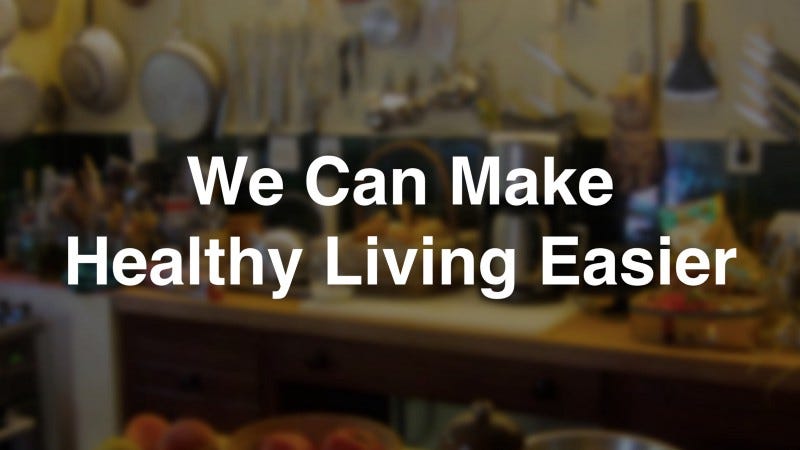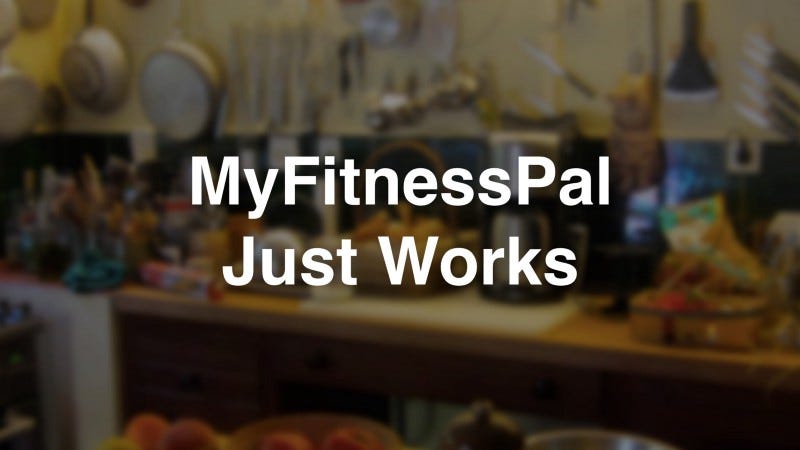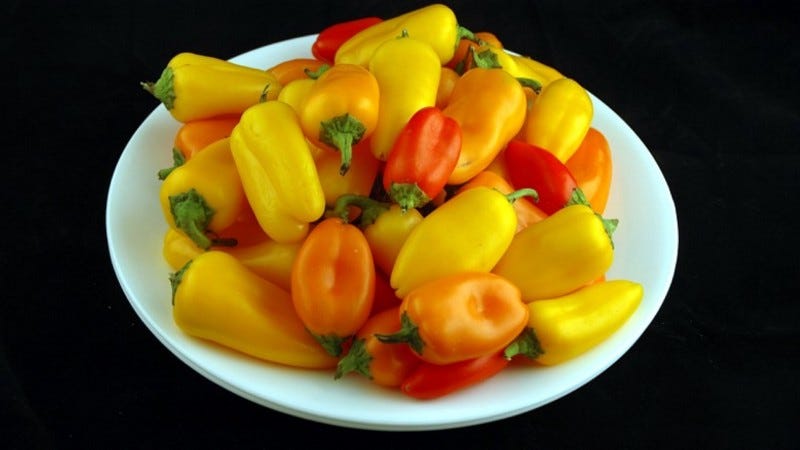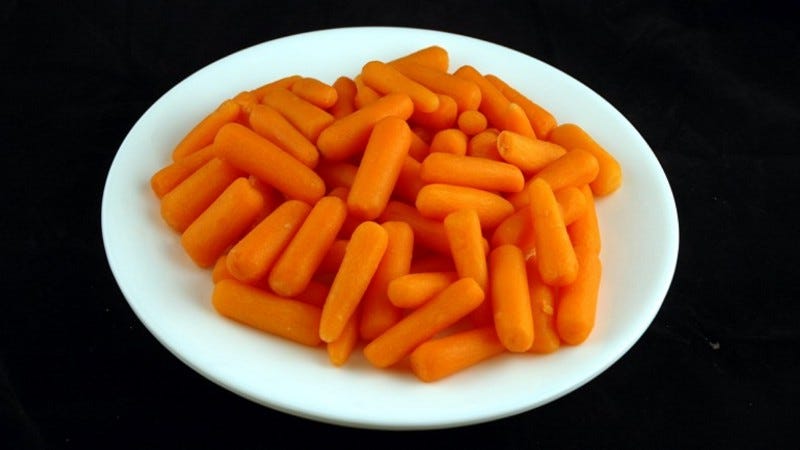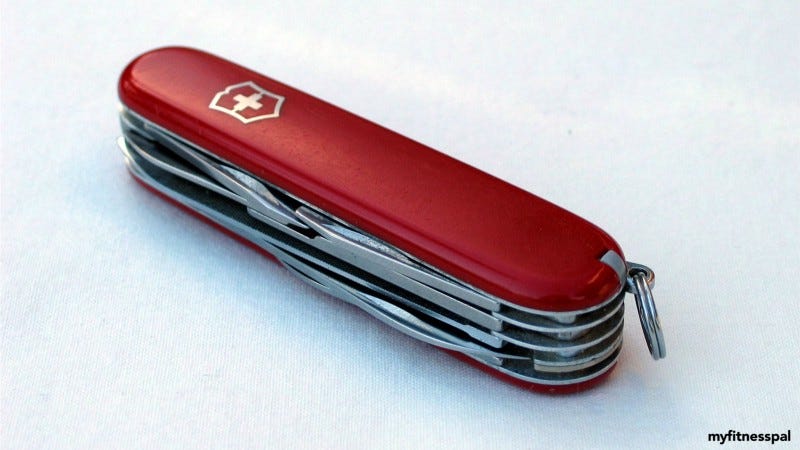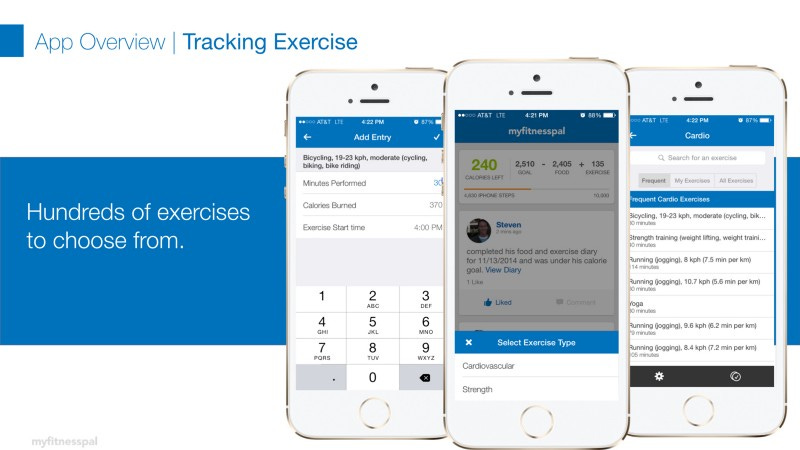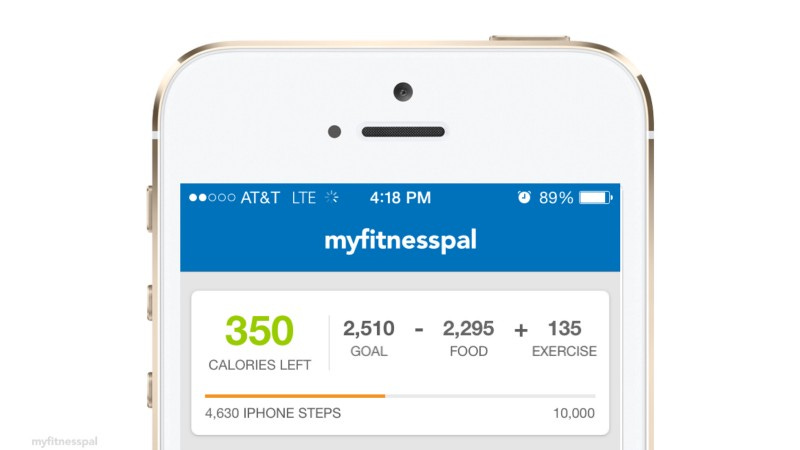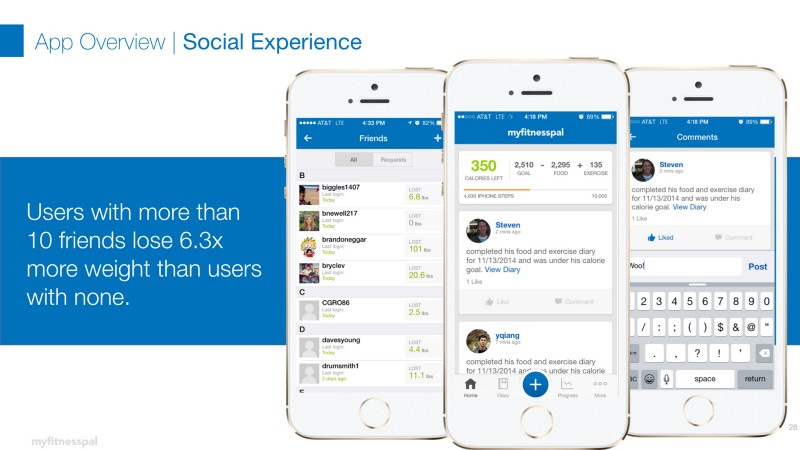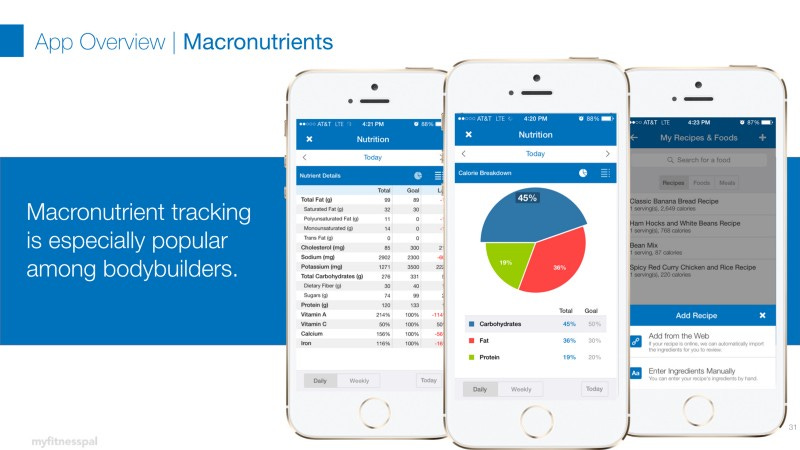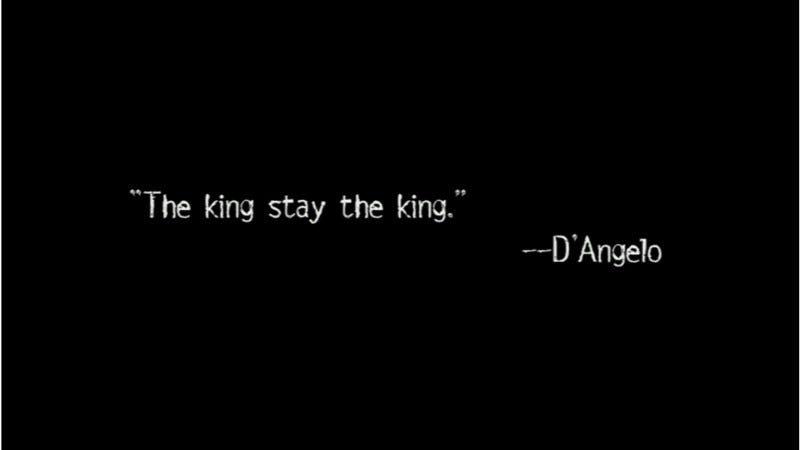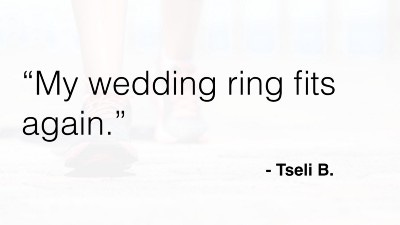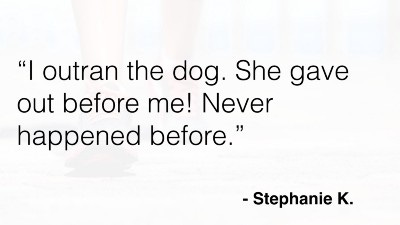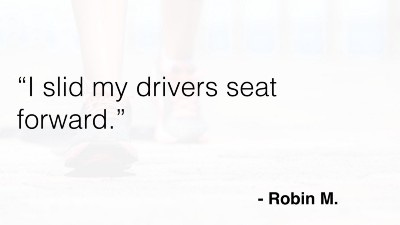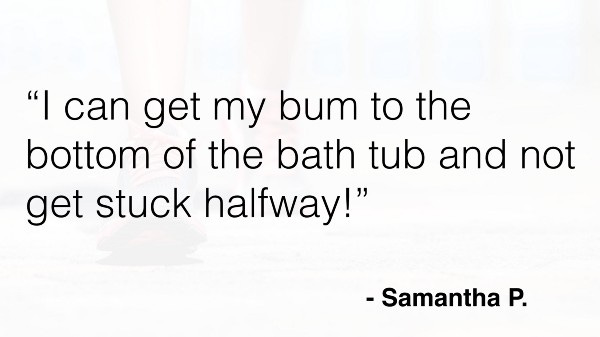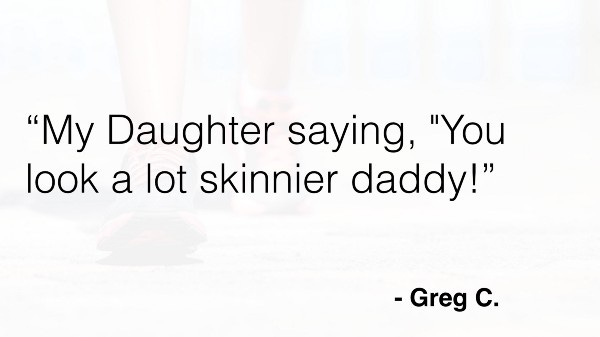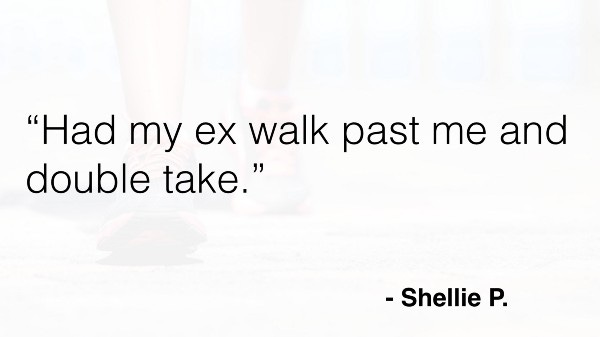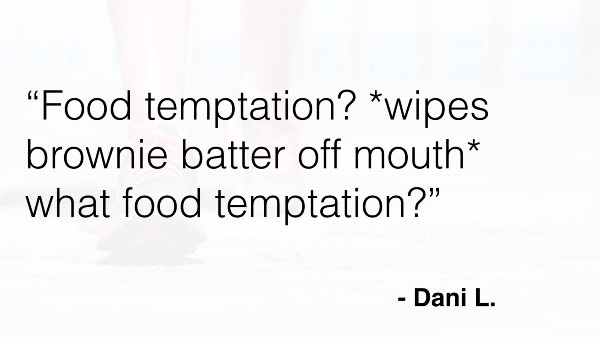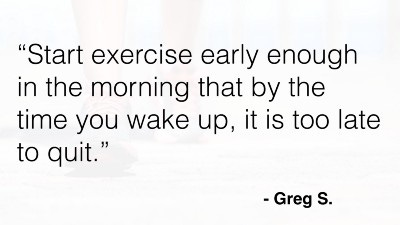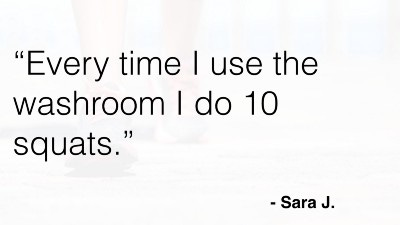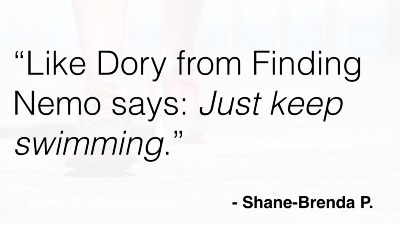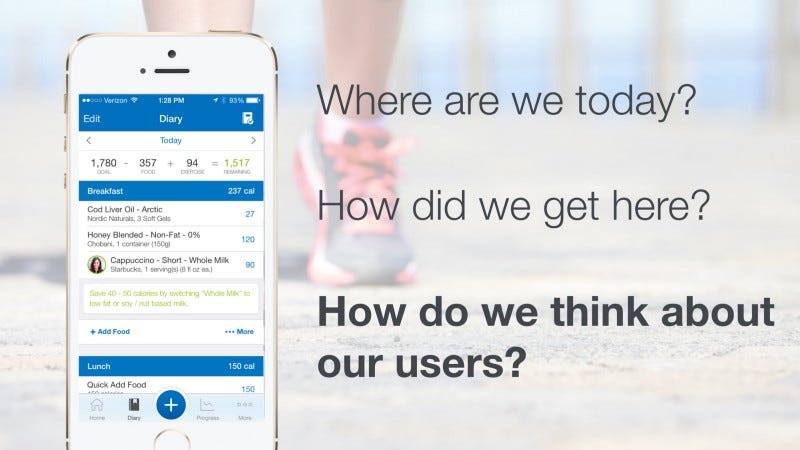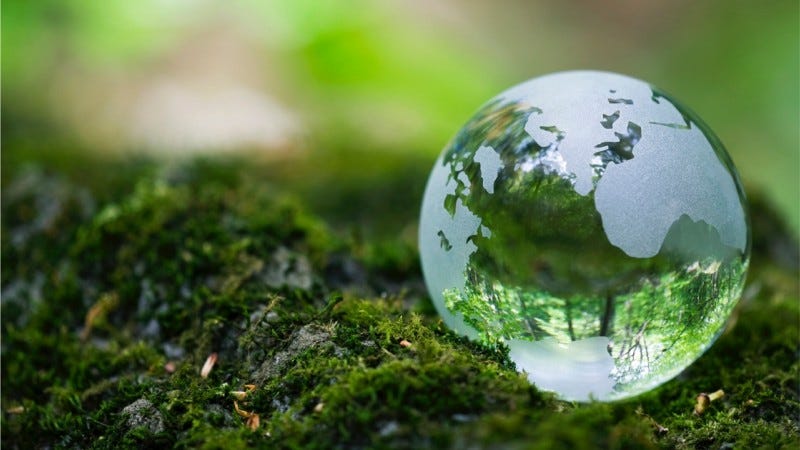How To Lose 200M Pounds — Why MyFitnessPal Works
Since Mike and Albert founded MyFitnessPal we’ve helped people lose more than 200M pounds.
How & Why MyFitnessPal Works
I wrote this post in 2015, as an internal memo to the team. I’m sharing it now because I think it contains lots of lessons for the next generation of founders building products to help people live healthier, better lives.
Since Mike and Albert founded MyFitnessPal we’ve helped people lose more than 200M pounds.
That’s what 15,000 elephants would weigh. It’s a lot of weight.
And it’s one of the reasons we’re the world’s most popular health and fitness app.
Today, we have more than 75 million users, which is up there in the rare air of the most popular mobile consumer applications of any kind.
Almost by accident — we’re the largest longitudinal study of human health behaviour in history — the billions of data points we have feasibly hold the answers all the big questions we have as a society about health and fitness.
And because of all that, because we’re in an unprecedented place, our job is to surface that wisdom and insight and make it accessible to everyone.
That’s more than a job though. It’s our responsibility.
To work every day to make a healthier world. To a make the world a place where it’s easier to be healthy than it is to be anything else.
So I want to start by very quickly talking about MyFitnessPal and our place in the world.
Then, I want to recap briefly some of the early decisions that led us to this point. Most of us weren’t here when those decisions were made. But culture sets fast like cement, and as a group, we’ve all inherited it.
Reflecting on the ingredients that were present in those early days is a worthwhile reminder of who we are as a company.
Finally, I want to talk about how we think about the people we build products for.
How do we understand their lives? How do we help make them successful?
So. This talk comes in three parts.
Where is MyFitnessPal today?
How did we get here?
How should we think about our users?
We live in a very strange time in history, where the biggest threat to our health is no longer external, it’s internal.
It’s the way we live. It’s the choices we make every day about how we eat and how much we move.
Human behaviour is the health epidemic of our time.
If you line up 100 people at random in the US today, 97 of them won’t be active enough this week. 66 of them will be overweight or obese.
We can all step back and nod in agreement about these big numbers.
But this isn’t a macro problem, it’s a highly personal, human one.
It’s the man who lost both his brothers to heart attacks and is trying desperately not to be next.
It’s the woman whose father’s dying wish was to have his ashes spread at the top of Mount Kilimanjaro, if only she could gain the fitness to get there.
It’s the son who looks at his obese father and hopes against all hope he can beat the averages and stay healthy for his own children.
When you look up close you see the pain and the struggle and the personal toll these statistics wield.
Addressing A Universal Failure
The costs of this epidemic — personally, to communities, to economies — is unsustainable. It might be THE pressing dilemma of our time.
People are failing at their health at a disturbingly high rate. There’s perhaps no other area of our lives in which we consistently fail so completely.
As consumers, collectively we spend $100 billion dollars trying to solve this problem, every year. And nearly all of that is wasted.
It has to stop.
Part of our role at MyFitnessPal is to stand up and say — we’re going to fix this. We’re actually going to solve this problem.
A Behavioural Solution To A Behavioural Problem
But we can’t solve these problems with pharmaceuticals or surgeries, we have to solve them by addressing the root cause. Human behaviour.
Behavioural problems need a behavioural solution.
They need the blockbuster drug of behaviour change.
My view, is that by the end of this decade, if we all do our jobs, we’ll be able to prescribe behaviour change programs with success rates equivalent to a course of antibiotics.
Where Compassion Comes In
To date, most of the solutions we’ve been building have been about knowledge. We have been trying to get more knowledge into people’s heads about their behaviour and their health. But if we’re going to succeed, we need to go beyond knowledge.
We need to move from knowing to doing.
You wouldn’t expect knowing your bank balance to fix your financial problems. In the same way, knowing your step count isn’t going to fix your health problems.
When people decide to make a healthy behaviour change, when they decide to once and for all, to turn their lives around, where do they start?
Alone. All alone.
With uncertainty and confusion.
With compassion-less products — inanimate ab-roller and shake weights, sharky gyms, weigh-ins in front of strangers at suburban strip malls.
They print out lists of squats and lunges and recipes for boiled chicken and steamed broccoli and 5 almonds.
The brave people who decide to make a healthy change deserve better.
I have a view that the best health products, the ones that will work like an antibiotic, will combine multiple elements: hardware, like scales and activity trackers, active and passive collection of key data, the support of both a social group and a coach, an educational component and a very clear, prescriptive path to success.
These products will engage people not just through a few weeks, but through years. They’ll be smart about what they know about every user — it won’t just be a name, weight, height, email and User ID — and they’ll adapt and bend as the user and the user’s context changes. It will be a relationship.
And that’s where we come in. Your Fitness Pal.
Our mission is to take what’s hard about living a healthy life and make it easier.
So what’s the secret? What’s the essence of the product?
I think it’s actually pretty simple. MyFitnessPal works because of a four-part, virtuous cycle.
First, you track what you eat and drink. The #1 predictor of success with MyFitnessPal is # of days logged. Nothing else comes close. The more days you track your food, the more likely you’ll achieve your goal.
The second phase of the loop involves learning. Tracking what you eat and drink helps you to learn about what you put into your body. The learning generally happens in three parts. First, you learn how much food you should be eating every day. Second, you learn what is in the food you’re eating. You see how many calories it has.
You will never forget the moment you discover how many calories are in a muffin.
It might be intuitive to everyone in this room how many calories are in the foods you eat, but I want to make it crystal clear. For many of our users, what makes MyFitnessPal so valuable is that it takes the invisible, and makes it visible.
It teaches you that four tootsie rolls has the same number of calories as this many peppers.
That for the same amount of calories, you could choose this many gummy bears:
Or this many apples:
Or that sipping a little nightcap of Baileys Irish Cream:
Would the same as eating all of these baby carrots.
These are not images you can unsee.
The third part of learning involves discovering how the calories you eat are spread out between the macronutrients: fat, carbohydrates and protein and the micronutrients like Iron and Vitamin D. Macronutrients allow you to dive deeper into your eating habits, to see if you are eating not just the right amount, but the right balance of foods.
The learning phase, gets you off autopilot. It makes you more mindful. I generally don’t like using the word mindful. People think it’s a hippy word. But it’s actually the whole game. Being more mindful means you stop and think for a moment. What am I about to eat? What did I already eat? What am I going to eat later? And if I eat all of those things, how will I be tracking relative to my goal today?
If we can make someone mindful in that way for just a few meals in a row, we know they’ll lose weight.
We know that 88% of MyFitnessPal users who track a food for seven days lose weight.
And then finally, in the third phase of the virtuous loop, once they’ve tracked and learned, they’ll start to see results. It might be weight loss, or even just a sense of mastery, a sense of feeling in control of something that was previously unmanageable. But if we can give someone that success moment, we know they’ll log again. And continue learning, continue being mindful, and continue succeeding.
It sounds counter-intuitive maybe, that just writing down what you eat could make any difference, but it does. It makes an incredible difference.
This keeps being true, even after months of use. The value of tracking what you eat stays incredibly high for a really long time.
One of the things I’ve learned, is that what is complex for me, can be broken down incredibly simply by our users. I’m stuck in the trees but they can see the forest.
Recently on Facebook, Barbara polled people and asked them the question: “What advice would you give someone who’s just getting started with MyFitnessPal?” You want to know what the most popular answer was?
You bite it. You write it.
It really is that simple.
MyFitnessPal is different because it’s not a diet, it’s a tool. We don’t restrict the foods you can eat. You could be eating high fat, low carb, paleo, keto, vegan, vegetarian, gluten-free, sugar-free, or Mediterranean — it’s up to you to find the thing that works for you…
But. For it to work — If you bite it. You write it.
So that’s where we are today. A tool for a society facing a crisis of historical proportions.
How did Mike and Albert Lee, take an idea that came about when Mike needed to get in shape for his beach wedding — how did they take that idea and get it to where it is today? With more than 75 millions users.
This may sound trite, or even unhelpful, but the answer is simple — they built something that people really, really wanted.
It doesn’t matter that I think that.
It matters what users think.
And more than 350,000 of them have rated the app five stars in the App Store.
Glennis and I surveyed four groups of users earlier this year. We looked at people who downloaded the app and never used it. People who used it once and didn’t use it again. People who used it for a week and stopped. And then people who used it for a month and quit.
We were trying to find out why they were quitting.
But what surprised us most, was that every group, even those who never used the app, were highly likely to recommend it to their friends and family.
For those familiar with a net-promoter score or NPS, we found our NPS was off-the charts for all four groups.
When we look at how people find out out about MyFitnessPal, when we dive in to work out why they downloaded us — we find that 80% of people download it because a friend, or trainer, or nutritionist or doctor told them about it.
What Mike and Albert did, was build something that people loved so much, they had to tell others about it.
Let’s pause on that for a moment.
If that’s true, and as far as we can tell, it is — then that means that the single most important way we grew, the reason that more than 50 million people downloaded MyFitnessPal was because someone else felt compelled to share it with them…
That is the core of what has made MFP successful.
Remember — there’s been no ad campaigns, no adwords, no sneaky tricks.
It was all down to a single growth hack — the hack of building something good enough that people felt compelled to tell other people about it.
So let’s take this opportunity to dive in a bit and break down what exactly people find so useful. What is it about MyFitnessPal that makes it so recommendable?
App Overview
The other thing that’s hard to do as an MFP employee, is to remember what MFP looks like to a stranger.
We see it all, the warts, the bugs, the late nights of banging your head against a wall.
But if you’ve never done any of that, MFP is a weight-loss swiss army knife.
Our food database has more than 4 million foods, which is the world’s biggest food database, so your search should find exactly what you’re eating, even if it’s a customised Subway six-inch. If your food has a barcode, it’s even easier. You can just use the barcode scanner, by hovering over the food and it will record the calories automatically.
Everything you eat comes off your daily calorie goal.
But you can win calories back by exercising. Over 90% of MFP users exercise and almost 50% of them have a gym membership. Their active lives are just as important as their nutritional ones.
If you have a step tracker you love to use, like a Fitbit, we factor that in too. If you don’t have your own step tracker, we can automatically track your steps on any phone that has the M7 chip in it.
If you’re looking to record a workout, you find it in the database and set its duration. Using the activity type and duration, the MFP calculates exactly how many extra calories you burned.
So that describes the main mechanic of the app. That’s what someone new to us sees on first glance.
If you think about the constellation of food and exercise theories, books, programs and cults that are out there — reducing it all to a single number brings great relief to people.
Something that’s become increasingly important to users in the past couple of years is connectivity — the ability to connect all their apps and devices to a single hub. 80% of wearables integrate with MFP including Fitbit, Jawbone, Galaxy Gear, and Bodymedia.
All of this matters, because MFP users who connect their accounts with another fitness/health app are nearly twice as likely to succeed.
The social experience of MyFitnessPal is centred on the newsfeed, where you can keep track of your friends’ progress, like and comment on their status updates and share updates of your own.
Users who share their diary with friends lose 2x as much weight as those who keep it private.
Users with more than 10 friends on MyFitnesPal lose 4x more weight than users who don’t have any.
If we look at users who have more than 10 friends and log a food every day for their first 30 days on MFP, they lose 10.5x the amount of weight as users who don’t have a friend.
To a stranger, think of all the value that social MFP can bring.
A stranger can also track all their progress over time. The most frequently used report is the weight loss report. We see it pop up all the time on Twitter… people proudly revealing the dramatic downward slope of their weight.
That’s the beauty of MyFitnessPal. You can take all kinds of routes to your goal.
For people who are using MFP in a more advanced way, macronutrients are an essential part of the experience.
Remember in one of our user panels, the man who’d lost over 40 pounds on the app telling us — “Every day, I just try and eat until my pie chart looks like the South African flag.
We see incredible engagement with our recipe tools. Tens of thousands of recipes are created by our users every day. And here’s something that might surprise you: on average, users who logged a home-cooked recipe this year lost nearly 40% more weight and logged almost twice as much exercise as those who did not log a recipe.
Looking at users who logged recipes in 2014, we compared nutritional data from days when users logged recipes vs. days they didn’t.
On days when they did not log a recipe, users were over six times more likely to go over their calorie, carbohydrate, fat and sugar daily goals and over seven times more likely to go over their daily sodium goals.
That’s why we have a full-time dietitian at MFP creating recipes to share on the MFP blog — with calories and macronutrients already counted, making it easy for users to upload them.
I could go deeper, but you’re starting to get the picture. There are a myriad of other features:
You can customise your goals as you go along — as your weight changes or your goals change — so will the app.
You can access our treasure trove of dietitian approved recipes from directly within the app.
You can set yourself custom reminders to remember to track, or take your pills, or drink water… whatever your goal might be.
There is a lot more MyFitnessPal can do. People use MyFitnessPal for all kinds of reasons — losing weight, gaining weight, managing diabetes, even managing eczema induced by certain foods.
The idea is that it’s a tool that can be extensible to whatever the end users needs.
When you strip all of our features away, MyFitnessPal is simple. It helps you track your food and exercise.
But key to our success has been the swiss-army knife approach, of building a suite of use-cases to support that central one. Everything we do, every feature we add, is about making it quicker and easier to track the food you eat, wherever you are because we know, if we can do that, you’re going to be successful.
Some Key Early Decisions
You might be thinking… I know.
I know all that.
But I wanted to take a minute to remember what MFP looks like to someone who’s never heard of it before.
To remember how much value we deliver for the cost of a few ads in the newsfeed.
First of all, Mike and Albert understood from the very beginning that there are only a limited number of tiles on the home screen of your smartphone. People won’t have multiple apps to do the same job. They’ll pick just one. And it’ll usually be the best one.
The context for an app is single-use. It’s not Yahoo-where it’s a portal to everything. It’s about being the best at that one thing.
And that feeds into the App Store environment — where everything is ranked and being #1 is crucial for staying at the top.
It’s like that scene from Series 1 of The Wire, where D’Angelo is explaining to his boys how chess works. And one of them asks — “So how do you get to be the king?” — and he answers — “It ain’t like that. See, the king stay the king.”
He might as well be explaining how the App Store works
<I hope that wasn’t too obscure. Referencing a scene from an HBO series from 12 years ago>
Anyhow — my point is this. There’s only going to be one app per job on the user’s home screen. And when that user goes to the App Store to find the app to do the job they need done, the first thing they’re going to see is the app ranked #1 in the category.
Mike and Al understood this as far back as 2008 — and so they stayed relentlessly focussed — they didn’t get distracted by all the other things MyFitnessPal could have been. They just made it the best food tracker, so there’s no dispute now if you’re deciding which one to download.
To a consumer, 350,000 five-star reviews can’t be wrong.
Second, and this is a big one, was the decision to make the app free. You saw earlier how much is packed into something seemingly so simple. In a market crammed with competitors, where a workout DVD set will set you back hundreds of dollars and where a food program might cost into the thousands, MyFitnessPal’s decision to remain free was crucial in allowing it to grow through the recommendations of others.
In a market where every consumer is on high alert for a scam or a snake oil product — offering a free, deeply useful product — built by a team you could trust provided vital differentiation.
The decision to remain free, even as user numbers grew into the millions was a make or break one.
And third, from the company’s inception, community has been at the core. By fostering a community, patiently and authentically, we achieved a few very important things. First of all, early users of the product could interact on the forums and be confident that Mike or Albert would respond within a reasonable time frame. If there were problems, they were heard and when they were fixed, it was Mike who would announce it.
People could see that Mike and Albert cared. And that’s the seed from which people’s trust in MFP grew. Without that trust, MFP would not have been able to grow through word of mouth. People believe in MyFitnessPal because for a long time, that’s what it was to them. And even though Mike & Al don’t have the same amount of time available to do that any more — we have a dedicated community team that exists to stay engaged and alert to the needs of MFP users.
It’s the same trust with users that allowed Mike to make a decision early on to crowdsource the food database. To trust users to add accurate food information. It wasn’t obvious at the time, but without making that decision, there’s no way we’d have the comprehensive database we do now. That decision, to let users incrementally improve the food database, one food at a time — has benefitted all the users that have come after them.
The more people we have on our platform, the more food data we end up with, the better our product is, the more companies want to partner with us, the more people want to use our platform.
Right from the outset, MFP’s community felt a part of the journey of the app. As the community grew, something else amazing and organic happened. Users started helping other users. Not just with tips and tricks for the app, but with health strategies, encouragement and support.
If you look just at the last month alone — the MyFitnessPal forums have supported hundreds of thousands of users to discuss tens of thousands of different topics.
It’s beyond belief in some ways, the extent that people are willing to go to help each other — if — you give them the opportunity.
Take one MFP user — who goes by the username Pandorian — for example. He’s in his mid-30s, and a part-time oil-rigger. But when he’s not oil-rigging, he’s helping people out in the MFP forums. As of yesterday?
He’d contributed more than 12,000 posts to the user forums. That’s 6x as many as our own CEO!
I said earlier how much we’ve learned from users and I think that’s the other side of building community. To assume that the staff at MyFitnessPal could ever know as much as our community does collectively would be total folly.
I want to share with you quickly some of my favourite knowledge from the community. First off, let me explain to you what a non-scale victory is. A non-scale victory, or NSV, is something that bubbled up organically in our community forums. It means a victory in someone’s life that happened off the scale. NSVs recognise the importance of making progress, not just in terms of weight goals, but in terms of life more generally.
Every few weeks, we’ll ask the community, what were your NSVs this week. Here’s some of my favorites.
We can also get very specific, and ask how people deal with certain situations. For example, we asked: What tricks do you use to avoid food temptation, especially when you’re not at home? Here’s what people said.
We ask people about their favorite tips and tricks.
And finally, we asked them recently to share the quotes that keep them going.
There is so much you can learn from a community if you foster it correctly in the early days.
To sum up — the key decisions were focussing narrowly from the early days of the company at being the best at one thing. The second key decision was to remain free — regardless of what the market or competitors were choosing to do. And third, building community by being a part of it since the early days of the company.
So that is how we got here. A relentless focus on building the best, free food tracking application.
Now I want to dive deeper into that relentless focus. And talk about how we apply the same focus to understanding our users. I think it’s useful to discuss this. How you think about your users will be perhaps the most impactful factor in what kind of product you build and ultimately what kind of business success you will have.
There are two vectors on which to think about your users — the external and the internal. The external are the environmental factors that influence their experience. And the internal refers to the user’s psychology as they use and evolve with your product.
Let’s start with the external.
The issue for us all as product builders, is that there are profound, sometimes immutable forces pushing our users in the opposite direction. As product people, our bar is higher simply because the problem is so much more complex.
When we’re trying to transform our users, we’re fighting against jobs and kids and partners and travel schedules and social networks and dirty dishes and hangovers.
In other words — we’re fighting life itself!!
We cannot forget this.
We’re building products for a world where 1 out of every 4 days, a user is going to lose to sickness, injury, travel or to an intervening event like a Superbowl party or a work function.
We are building products that are competing with very real parts of people’s lives. We are building products that people use in a state of anxiety and depression and compression and stress… and we’re competing against all the easy outs — all the vices.
If we’re really going to make our user’s successful, we need to admit first to ourselves, the complexity and the difficulty of all our lives. Mine. Yours. And all the people who use all the products we build.
People estimate that, on average, they make about 15 food- and beverage-related decisions each day. But the truth is, they make more than 15 times that — more than 200 such decisions.
That gaps arises because people make most of their decisions — plate size, package size, available condiments, who they’re with, where they’re sitting, what they’re doing while they’re eating — are all unknowingly impacting the state of our health.
In that environmental context, all the fundamental principles of mobile apps come in to play: speed, instant utility and personalization are of the utmost importance.
Within that environmental context, we must also consider the user’s inner state.
What is their mindset? What is their health identity? What are their true goals? Their true wants and needs?
We see people transitioning between four main states of health.
In the first state they are failing at their health and and they are not trying to fix it. These are the people we cannot reach. They are what is referred to in the trans-theoretical model of behavior change as pre-contemplative.
Then you have people who are failing at their health and trying to fix it. The difference between this group and the first, is generally a transformative moment — maybe they caught a glance of themselves in the mirror and felt a sudden urge to change. Maybe they had a family member die of a health complication. Maybe a doctor or a child said something that made them take a stand. The problem is, though they want to change, they aren’t succeeding. Often they don’t know where to begin. They don’t know how to get better. And they have unrealistic goals about how fast the change will happen, or have too narrow a mindset about what health means to them.
Then next group are those who are succeeding at their health and making a enormous effort to do so. Unlike the previous group, this group are starting to see success, starting to make progress, are finding a groove and beginning to develop positive health habits. But it’s taking effort.
Their horizons are expanding. Health is no longer a weight goal or a dress size. It’s a lifestyle. They are beginning to start to identify themselves as healthy in some parts of their lives.
And the final group, which is the one most of us are trying to get into, are succeeding at their health without any major effort. They have developed a flexibility, to understand where variation fits in — to understand that some days won’t be perfect — and to accept those days without judgement or guilt. Their habits are locked in and they are healthy, almost by default. They find it easier to make healthier choices than the opposite. In fact, they don’t even see them as choices, they are just the things they do as part of their normal lives. This is the goal.
This is our goal.
To make this kind of health possible. Living healthy without struggle and the confusion and the delusion and the disappointment.
Our products take weeks and months and years to work, but people want us to make them feel empowered and energized and transformed on the very first use.
We must be able to distinguish between people’s wants and their needs — while ensuring both are adequately met.
And to get there, we must be cognizant of these internal factors and then aware of how external factors might impact them.
To finish — I want to leave you with just one thought — users are people too.
The health crisis is most often expressed in numbers… but what really matter are the stories.
The individual stories of brave people, people like Tseli — in non-ideal circumstances — with busy, compressed lives, and constantly shifting demands on their time, trying their hardest to find the best versions of themselves.
Our job is to understand the complexity and sophistication required to help people solve their problems.
And to build products with the compassion and empathy those people deserve.
Products they love.
And products that really, truly, positively work.
In 1993, the Journal of the American Medical Association put diet on a short list of the lifestyle factors blamed for half of all deaths. It’s now more than 20 years later and sadly, we haven’t made much progress.
We can change this. We can do better.
We can make living healthy easier for everyone.






